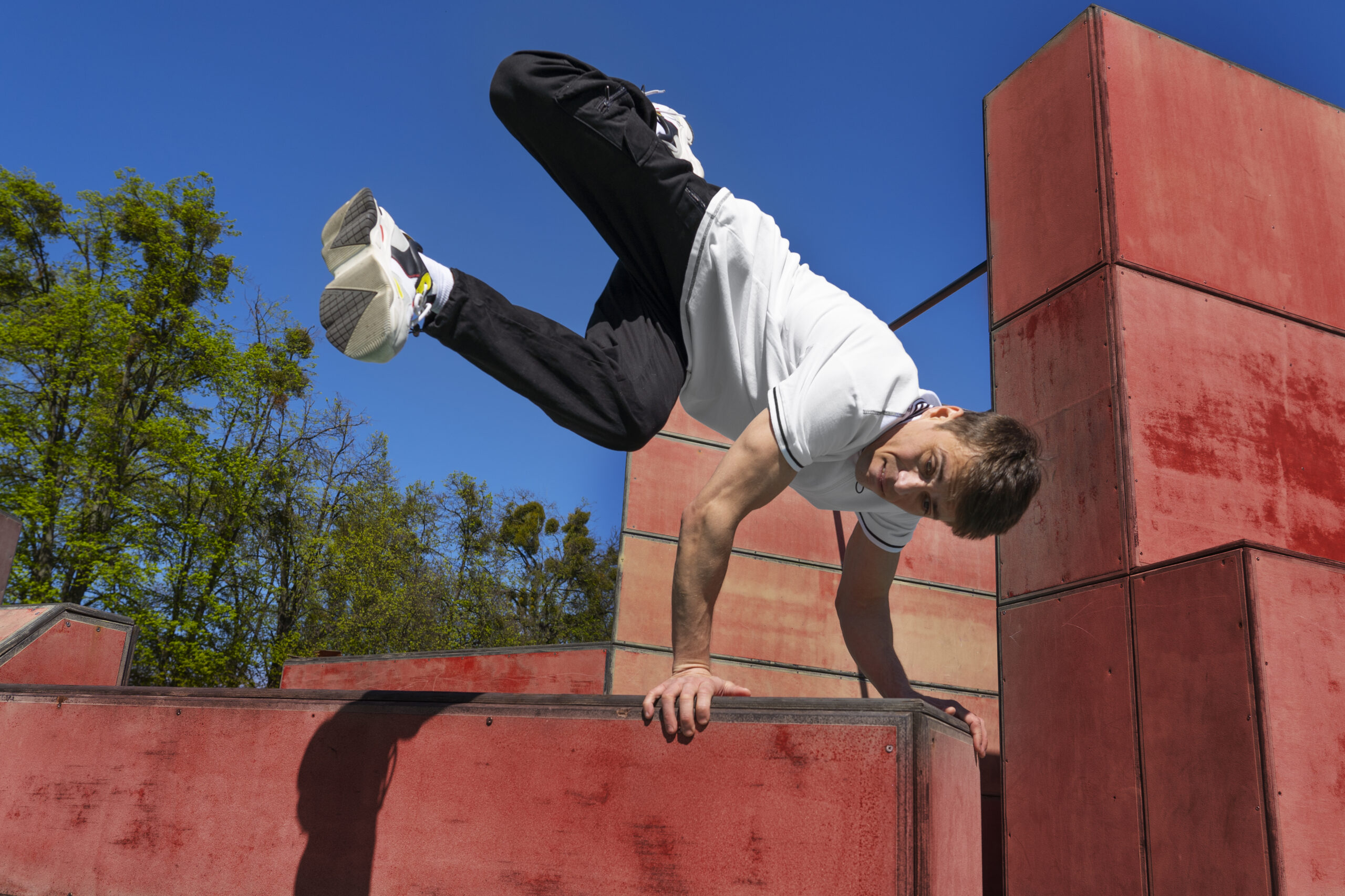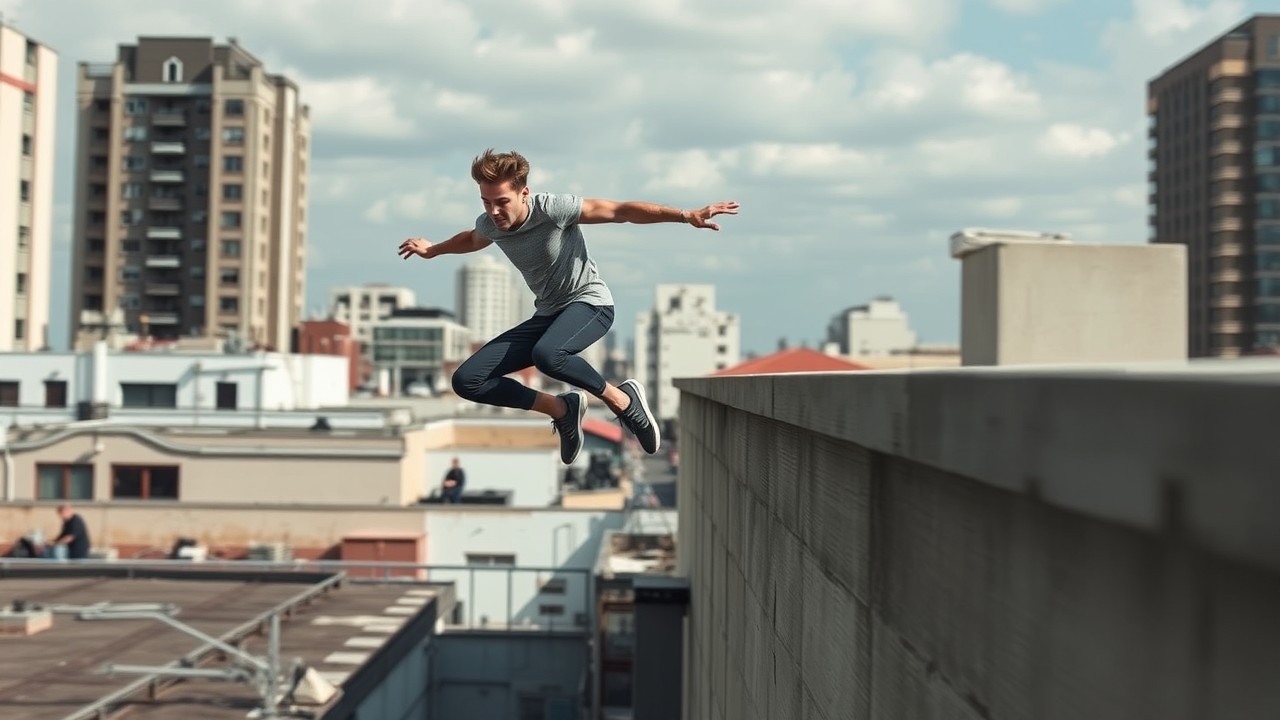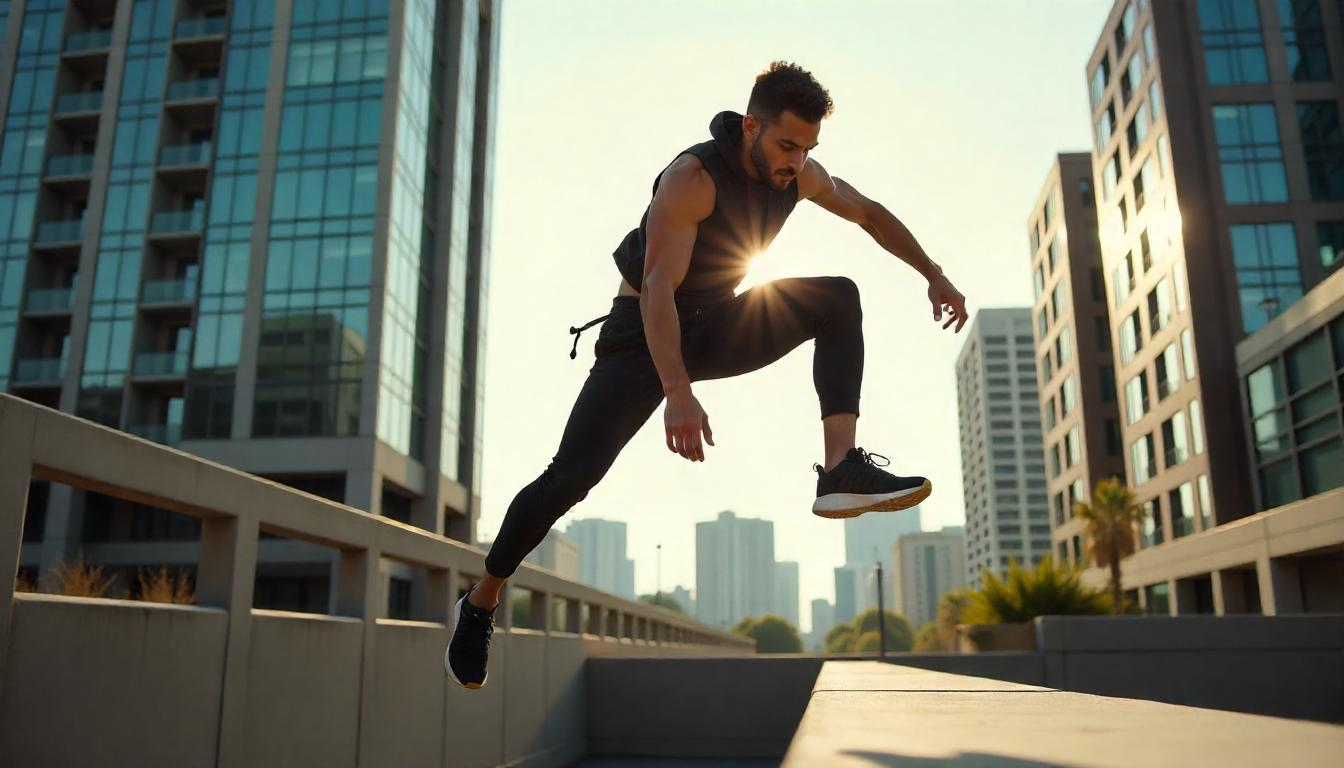Freerunning is an urban sport that is the perfect fusion of creativity and movement. Speed, balance, and flow are very important. If you are thinking of starting freerunning, these freerunning tips will be very helpful for you.
Whether you are a beginner or at the intermediate level, the right freerunning techniques and safety tips can protect you from injury and help improve your performance. In this article we will discuss tips for freerunning beginners, techniques for building balance and flow, and the best strategies for practicing in urban areas.
Freerunning is an art that gives you the opportunity to push your boundaries and explore new movements. So let’s get started and become a part of the exciting journey of freerunning!
Freerunning Tips for Beginners

Focus on the basics
Start freerunning with basic moves, like rolls, vaults, and precision jumps. Perfect the rolls because they make landings safer. These freerunning techniques prepare you to learn more complex movements later.
Choose the right gear
Wear comfortable and lightweight shoes that provide good grip, and choose breathable clothing. Using protective gear like knee pads and gloves can be helpful for beginners, especially in urban areas.
Improve balance and strength
Balance and core strength are important for freerunning. Incorporate exercises like yoga and calisthenics into your routine. These help you build control and stability.
Practice in Safe Locations
Practice in flat, obstacle-free spaces, such as parks or gymnastics gyms, to begin with. When training for urban freerunning, don’t forget to assess the hazards of the area.
Maintain Consistency
\Regular practice is the key to progress in freerunning. Have short training sessions, but practice consistently. Learn each new move with patience and focus.
Developing Your Freerunning Skills
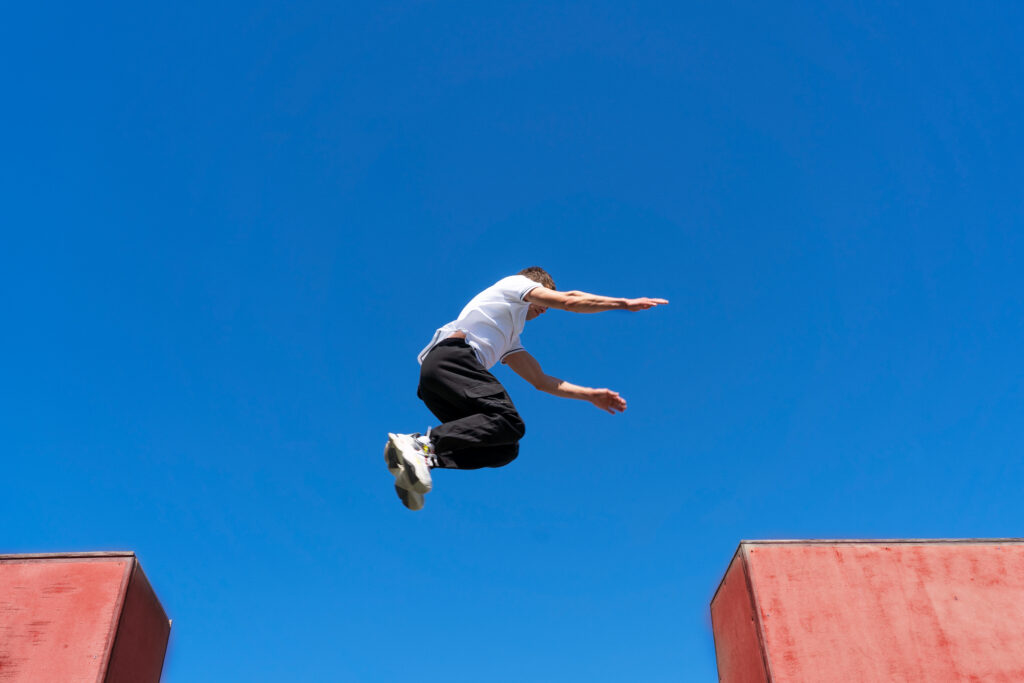
Learn Intermediate Techniques
Wall Runs: Learn to run on walls using coordination of your arms and legs. This move will improve your body strength and agility.
Precision Jumps: Your balance and aim are tested here. Work on controlled landings to hit targets.
Cat Leap: This is a common freerunning technique that focuses on flexibility and grip.
Focus on Advanced Moves
Flips and Twists: The advanced level of freerunning begins when you learn aerial moves like flips and twists. Practice them on soft mats first.
Create Combinations: Learn to combine different moves into one flow. This helps to build your creativity and flow.
Improve Flow
The most important element of freerunning is flow. Learn to connect moves smoothly. Start practicing slow in the beginning and and increase your speed with time. Record your movements and analyze where the flow is breaking.
Boost Strength and Stamina
Strength and endurance are important for freerunning. Make sure to add bodyweight exercises like pull-ups, push-ups, and squats in your routine. Practice sprints and long-distance running to increase stamina.
Be Mentally Prepared
It is important to overcome fear and maintain focus while doing high-risk moves. Using visualization techniques to boost your confidence is helpful.
Patience and determination are part of the freerunning journey. It takes time to master each move.
Freerunning Safety Tips
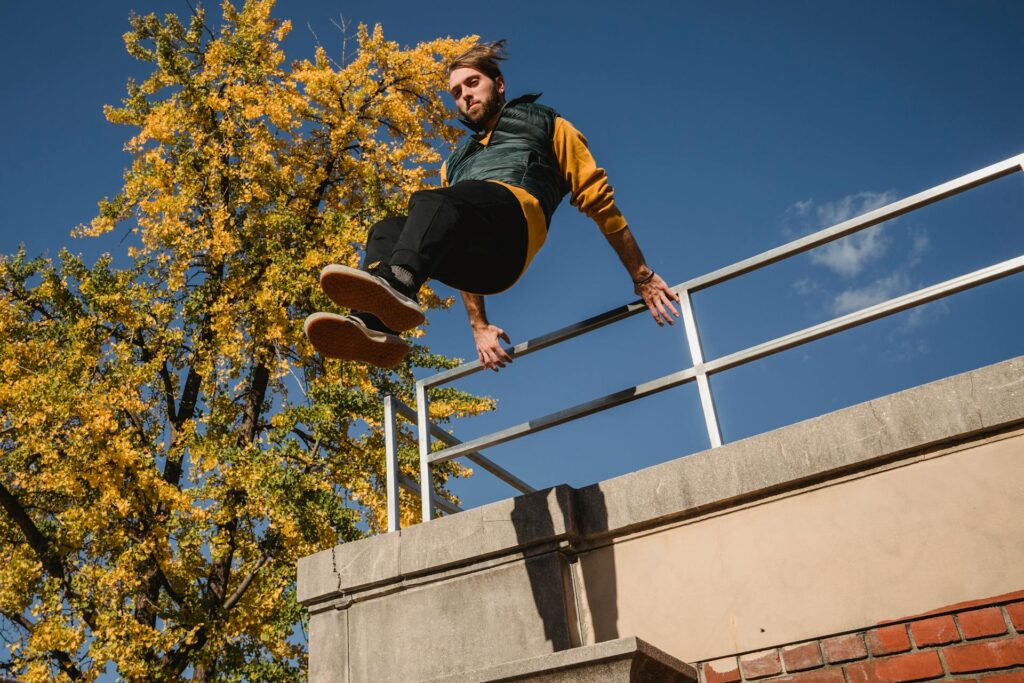
Never Forget Warm-Up and Stretching
It’s important to prepare your body properly for freerunning. Warm-up exercises like dynamic stretching, arm circles, and leg swings can help you relax your muscles and reduce your risk of injury.
- Focus on warming up major muscle groups—legs, core, and arms.
- Gentle stretches improve flexibility, which helps with landings and vaults.
Learn the Right Landing Techniques
Practicing proper landings is one of the most important freerunning safety tips. If you land incorrectly, you could experience joint pain or sprains.
- It’s important to learn to roll, as it distributes force evenly.
- Keep knees slightly bent and use them to distribute body weight evenly.
Choose Safe Practice Locations
If you’re a beginner, do your practice in safe and controlled environments. Parks, gymnastics gyms, and dedicated freerunning spaces are best.
- Assess your surroundings when practicing in urban areas.
- Be careful when practicing on ledges, railings, or uneven surfaces, as these can put you at risk for injuries.
Avoid Over-Exertion and Over-Confidence
The biggest risks in freerunning come from over-exertion and over-confidence. Understand your limits and take a break when you feel tired.
- It’s equally important to rest your body, so include recovery time in your training schedule.
- Be patient when learning new techniques and don’t try complex moves quickly.
Use Protective Gear
When you start to learn advanced moves, make sure to use protective gear such as knee pads, wrist guards, and elbow pads. These are especially helpful in urban freerunning training, where surfaces can be uneven.
- Using knee pads and gloves can be helpful in the beginning when you’re learning vaulting or precision jumps.
Stay Focused and Mentally Prepared
It is very important to stay focused in freerunning, especially when you are performing high-risk moves.
- Mental preparation and focus can help you be accurate and controlled while performing your moves.
- It is also important to overcome fear; visualize your moves while practicing them and build confidence.
Mental Preparation for Freerunning
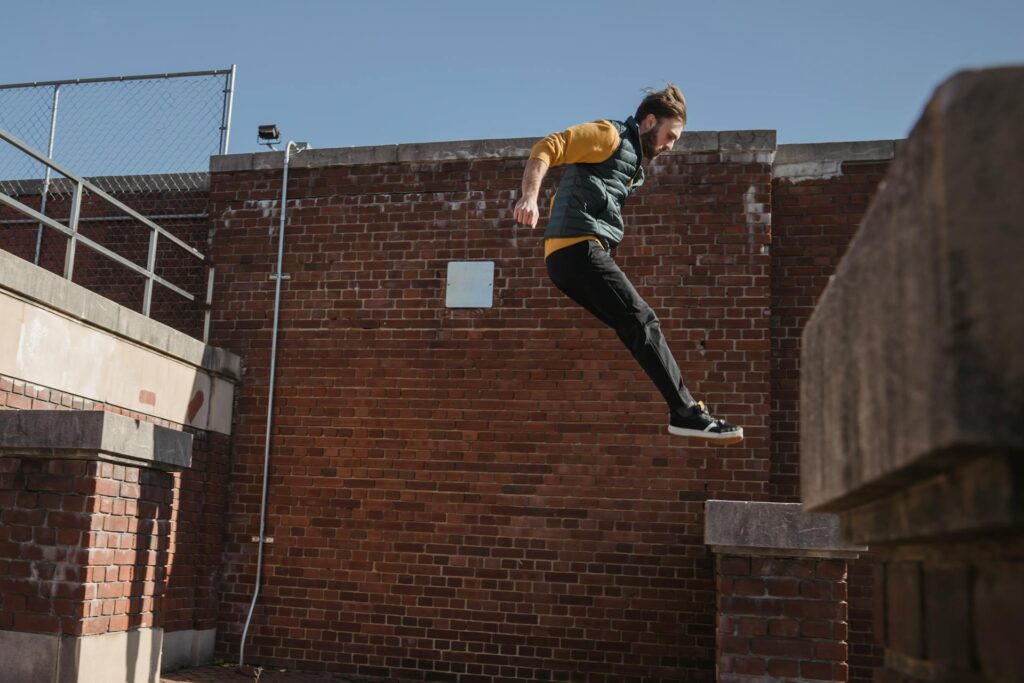
Understand and overcome fear
Fear is a natural feeling in freerunning, but handling it correctly is important for your progress.
- Visualization techniques: Visualize your moves in your mind. Imagine your move executing smoothly.
- Progressive training: Gradually overcome your fear. First practice on small heights or simple obstacles and then gradually increase the difficulty.
Build confidence
Confidence is very important in freerunning. If you do not trust your abilities, you will not be able to perform accurately.
- Celebrate small wins: Appreciate yourself for achieving every new move. It boosts your self-belief.
- Tips for Freerunning Beginners: Master your basics; a strong foundation will boost your confidence.
Maintain Focus
It’s important to avoid distractions when doing high-risk moves or complex routines. Injuries can be occurred by impatience.
- Practice Mindfulness: Meditation and deep breathing exercises can help you sharpen your focus.
- Set Clear Goals: Set a specific goal for each session and concentrate on it.
The Importance of Patience and Perseverance
Freerunning is an art that is perfected with time and practice.
- Consistent Practice: Focus on small improvements daily.
- Accept mistakes: Mistakes are a part of improvement. Every failure is a learning opportunity.
Adopt a Positive Mindset
Your attitude makes a lot of difference in freerunning. Side-line negative thoughts and adopt a positive perspective.
- Learn from Others: Watch videos of experienced freerunners and get inspiration from them.
- Join the Freerunning Community: Interacting with freerunners can be helpful for motivation and support.
Freerunning Practice Tips for Consistent Growth
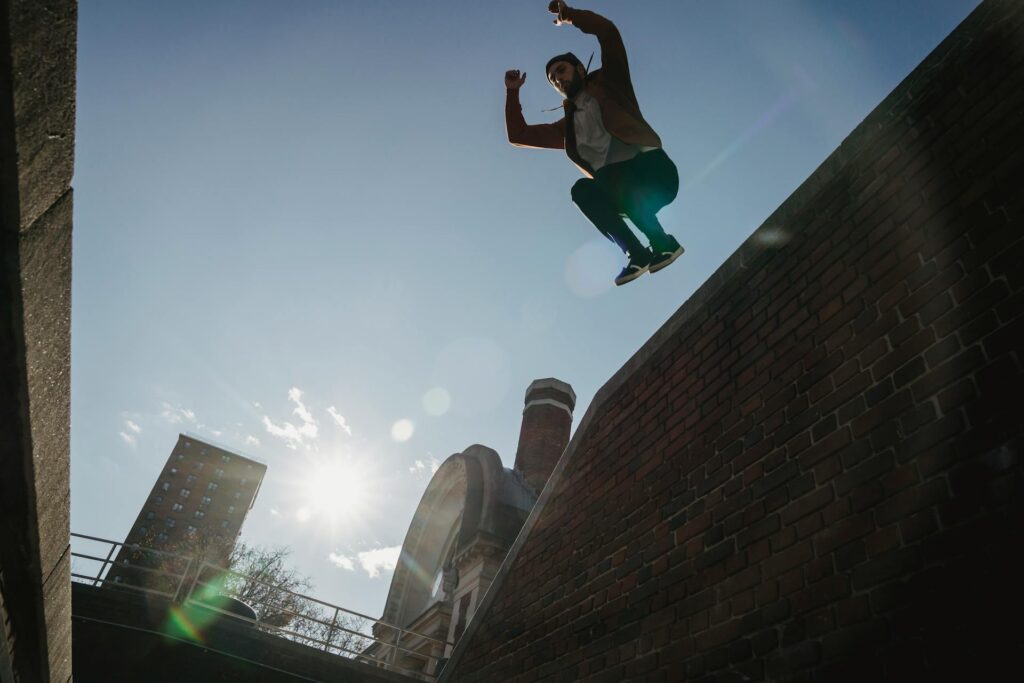
Dedication, structured practice, and smart training are essential for consistent growth in freerunning. Create a balanced plan for your training that focuses on daily drills, such as rolls, vaults, and jumps. Advanced techniques are build by mastering basics. Record your practice sessions and analyze movements, which will help identify flaws and track progress. Cross-training activities such as yoga and calisthenics improve strength, flexibility, and balance, while cardio exercises such as running and cycling increase stamina, which is important for longer freerunning sessions.
Choose safe locations to practice, such as parks or gymnastics gyms, especially if you’re a beginner. When confidence builds, explore urban freerunning spots where obstacles are challenging and diverse. Add a new technique or move each week to keep your learning exciting and dynamic. Also, prioritize rest and recovery—overtraining increases the risk of injuries. Foam rolling and light stretches ease muscle soreness and maintain flexibility.
Joining freerunning communities or local jams can also be helpful for motivation and learning. Training with other freerunners can help you learn new moves and get valuable feedback. Online freerunning groups also provide inspiration and tips. By following these tips you can achieve steady growth and enjoy the freerunning journey to the fullest.
Freerunning as a Lifestyle

Freedom and Expression
Freerunning connects with your surroundings in a new way. See every obstacle as an opportunity and react creatively. This sport boosts your confidence and gives you a chance to express your individuality. Every move is a medium of self-expression that brings out the artist in you.
Fitness and Health Routine
To make freerunning a natural part of your lifestyle, it is important to take care of your fitness and health. Daily exercise, strength training, and a balanced diet keep your body ready for freerunning. This lifestyle has a positive impact on your physical fitness as well as mental well-being.
Mental Growth and Resilience
The biggest benefit of a freerunning lifestyle is your mental strength. Practicing overcoming obstacles makes you mentally strong to face the real challenges of life. It develops a never-give-up attitude in you and gives you the habit of creatively finding solutions to every problem.
Conclusion
Freerunning is a unique and dynamic art form that allows you to experience the ultimate combination of freedom, creativity, and strength. Don’t view this sport as just a physical activity, but rather as a journey that helps your mental and physical growth. Proper planning, consistent practice, and using freerunning tips can take your skills to the next level.
Patience and focus on the basics are key for freerunning beginners, while advanced freerunners should continue to refine their moves. Never ignore safety and proper techniques, as these can protect you from injuries and ensure long-term progress. Adopting a freerunning lifestyle not only makes you physically fit, but also mentally resilient.
This art form gives you a chance to live life with a new perspective. Consider every obstacle as an opportunity and use it for self-expression and creativity. This journey of freerunning can be challenging but the freedom and satisfaction you get from it will be priceless. So polish your skills and enjoy your freerunning journey!
